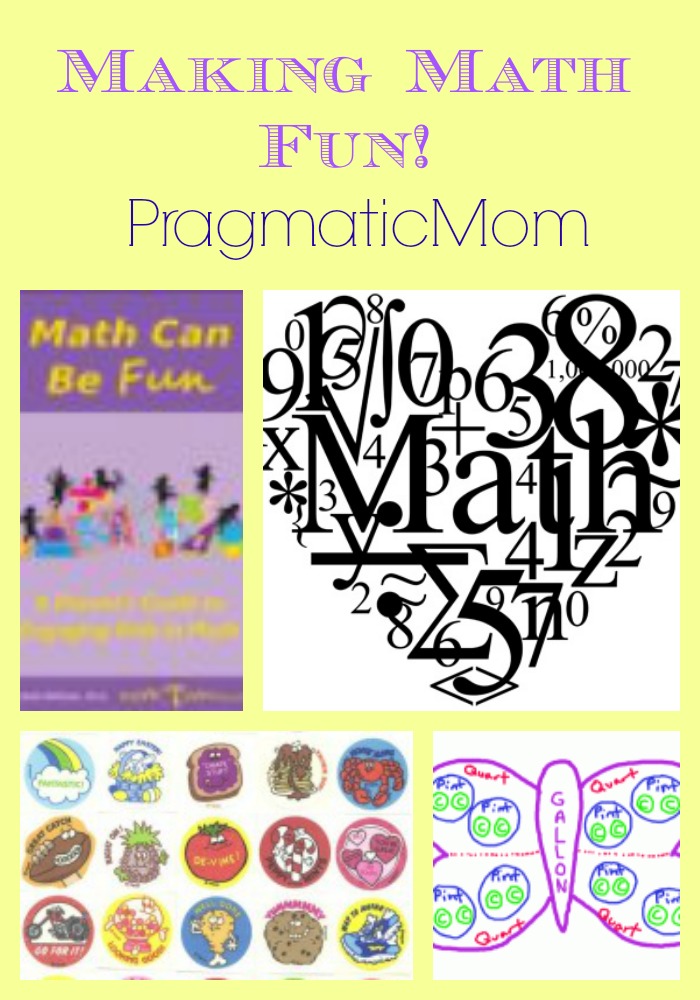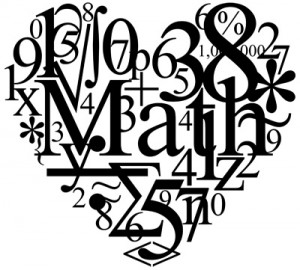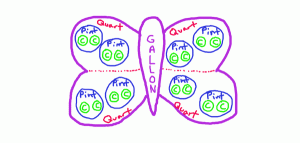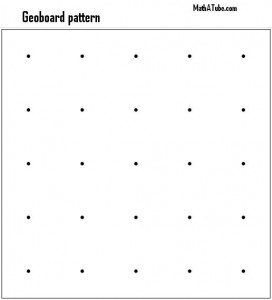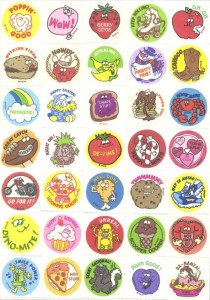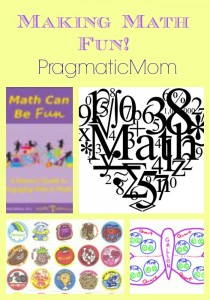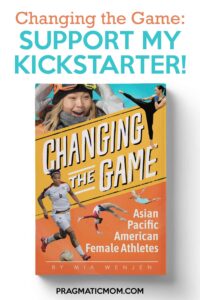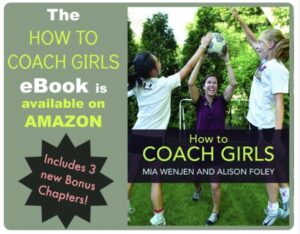Please welcome my guest blogger, Michele Williams, Ph.D., who has a math tutoring company. Today she will be sharing tried-and-true ideas for making math fun for kids!
——————
I can’t think of anything more rewarding than tutoring, especially in math. That’s why I spent nights and weekends helping family and friends with math during my years as an engineer, and it’s why I eventually made the transition to tutoring full time. What could be better than helping a child go from “I can’t do fractions” to “Fractions are fun!”?
My goal is to show kids and their parents that math can, and should, be fun. I use as many visual, auditory, tactile and kinesthetic (movement) activities as possible in every tutoring session, and I’ve compiled my favorite approaches in a book called Math Can Be Fun: A Parent’s Guide to Engaging Kids in Math. The ideas are practical and easy to implement, and I’ve used them with students from 9 to 16 years of age, including a child with ADHD and another with high-functioning autism.
The first hurdle for many kids in learning math is the “I’m bad at math” mindset. It can be a real challenge to overcome, but there is always a way. And the way that works best for me takes advantage of a simple technique with a lot of psychology research behind it. By way of illustration, let’s do an experiment. Think of a skill that you believe you lack—it can be math or spelling or anything. But pick something you think you’re really bad at, and that you doubt you could ever become good at.
Now close your eyes and say out loud, “I can’t (fill in the blank).” Notice how that statement feels. Then, keep your eyes closed and repeat your statement, but add the word “yet” to the end. Can you feel the difference? Doesn’t it feel better? Now try it with your child, and pay attention to his body language and facial expressions. The difference is often visible. I’ve used this trick with many students and I can tell you that it works.
Now that we’ve covered the mindset, let’s talk about having fun with math. Here are a few of the ideas that I share in my book.
Use a whiteboard: The whiteboard is an all-purpose tool. With it and a variety of markers, you can: draw pictures to represent word problems; draw groups of sodas or dogs or cars to figure out addition, subtraction, multiplication, and division problems; keep score during a hot game of fractions dominoes; trace the outline of a shape so you can introduce geometric properties; and any number of other activities.
Customize the experience: There is no end to the ways you can make math problems relevant to your child. Start by making a list of your child’s interests. Then, as you set out to explain a concept or address a given homework problem, think of how you might incorporate one of these interests. If you’re working on geometry, use pictures of favorite items like race cars or horses (my autistic student loves the Mona Lisa!) to talk about shapes. Complex shapes can often be represented, at least approximately, by a combination of simpler shapes (rectangles, triangles, and circles). Ask your child to outline the shapes and measure them. (Measuring is a really important skill, so I sneak it in as often as I can.) Then talk about how to compute the perimeter and area. If you want to make it more challenging, have her do the measurement in both inches and centimeters, and do the calculation in both systems.
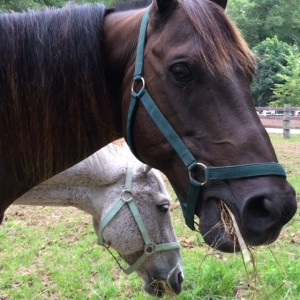
You can also “customize” word problems. If your child is struggling with a word problem about, say, the number of buses needed to transport 72 children to a museum if each bus can hold 12 students (yawn) … change it! If he is into horses, make it a problem about trailering horses to a show. If she is a swimmer, make it about taking the swim team to a meet. Every problem can be restated to make it more interesting to a particular child. And if it is interesting, they’ll be more open to learning how to solve it.
Make it active: Children are more engaged in learning when the process involves multiple types of activities. When you incorporate singing, rapping, clapping, dancing, or tactile activities into a homework session, your child will actually forget that he is learning because he’ll be having fun. Here are a few examples from the book:
Find math songs on line and sing (and move to) them with your child. One of my favorites is the Prime Number Rap on YouTube.
If you’re up for a challenge, make up your own songs. My fifth grader and I do a silly “flip and multiply” riff, complete with arm, head, and body movements, to remember how to divide fractions. She giggles every time we do it, and she will never forget the rule.
Use clapping or stepping to teach young children to skip count, in preparation for learning multiplication tables.
Make shapes out of Play-Doh, or a combination of Play-Doh and craft sticks. Then measure them and compute the perimeter and the area. For older kids, you can make 3-D shapes and compute the volume.
Use tactile learning tools such as a Fractions Tower or a GeoBoard.
Free printable to make your own geoboard.
Give them rewards: I don’t think there is a person on the planet who doesn’t appreciate being acknowledged for effort given, so be generous with the kudos. These can include: stickers (metallic, Sponge Bob, dogs, horses, Disney characters, …), an enthusiastic “High five!,” pizza for dinner, pick of the family movie, or, really, anything! My autistic student happens to LOVE stickers, and at the end of most sessions, he is wearing them on his hands, face, and t-shirt. He always shows them proudly to his mom.
These are just a subset of the activities I use to make learning math a fun experience. And if you incorporate some of these ideas into each homework session, you’ll soon discover that homework becomes less stressful. In fact, helping your child with math can be fun for both of you. Drawing is enjoyable if you don’t worry about how well you draw, singing and clapping are stress relieving activities, and the whole process of coming up with ideas for your specific child will whet your creative appetite. Give it a try — and let me know how it goes!
Michele Williams, Ph.D. is the owner of MathTutorPhD, an online tutoring and mentoring service for girls. During her 30-year engineering career, she spent her free time providing math tutoring to family and friends, and she taught math at the community college level. Her passion for helping others learn math led her to leave engineering to start her own tutoring business and a math education blog. Michele lives in rural western North Carolina with her husband, Mike. When she’s not working with students, she enjoys hiking, clogging, woodcarving, and photography.
BEST #OWNVOICES CHILDREN’S BOOKS: My Favorite Diversity Books for Kids Ages 1-12 is a book that I created to highlight books written by authors who share the same marginalized identity as the characters in their books.

